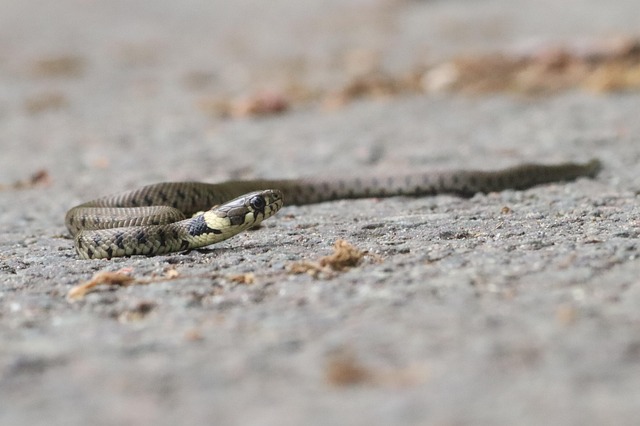Using natural ingredients like baking soda and vinegar, effectively unclog drains by tackling buildup from hair, grease, and debris. This eco-friendly method involves pouring baking soda followed by vinegar down the drain, creating a fizzing reaction that breaks up gunk. Regular maintenance with these ingredients prevents future blockages caused by soap scum and food particles, ensuring smooth water flow. Prioritize safety and proper ventilation when using natural remedies for optimal results.
Unclogging drains can be a pesky task, but with the right tools and approach, it’s easily manageable. This guide will walk you through the process of removing drain covers and addressing blockages using simple, effective, and eco-friendly methods. Our key ingredients? Baking soda and vinegar—a powerful duo that can dissolve even the most stubborn clogs. By following these easy steps, you’ll say goodbye to slow drains and hello to a smooth-flowing plumbing system.
- Understanding Drain Blockages and Their Causes
- Gather Your Tools: Baking Soda and Vinegar
- Safety Precautions Before You Begin
- Step-by-Step Guide to Removing the Drain Cover
- Combining Baking Soda and Vinegar for Maximum Effect
- Post-Cleaning Maintenance Tips
Understanding Drain Blockages and Their Causes

Drain blockages are a common household issue, often caused by a buildup of hair, grease, and other debris. Understanding the causes is the first step in effective prevention and removal. One of the most natural and eco-friendly ways to tackle these obstructions is through a combination of baking soda and vinegar. This simple mixture acts as a powerful cleaning agent, cutting through greases and dissolving organic matter.
When a drain becomes blocked, water flow is restricted, leading to slow drainage or even complete blockage. Regular maintenance involves pouring baking soda down the drain followed by vinegar, creating a fizzing reaction that helps break up accumulated gunk. This method is particularly effective for clogs caused by everyday substances like soap scum and food particles.
Gather Your Tools: Baking Soda and Vinegar

To tackle a blocked drain effectively, you’ll need just two simple household ingredients: baking soda and vinegar. These natural substances are not only eco-friendly but also highly potent in unblocking drains. Start by gathering your tools—a small container or measuring cup for each ingredient, along with a funnel if available, to make the process neater. Baking soda acts as a gentle abrasive, helping to break down grease and other buildup, while vinegar serves as a natural cleaning agent with powerful acidic properties. The combination of these two substances can effectively dissolve clogs and restore smooth water flow.
Safety Precautions Before You Begin

Before you begin, it’s crucial to prioritize safety. When dealing with drain blockages, especially if using natural remedies like a mixture of baking soda and vinegar, ensure you wear protective gear including gloves and eye protection. This prevents any potential exposure to harsh chemicals or splashes from the mixing process. Additionally, have a bucket nearby to catch any residual liquid and prevent slips or falls in your bathroom or kitchen. Remember, safety first!
Furthermore, ensure proper ventilation in the area to avoid inhalation of any potentially harmful fumes. Once ready, carefully remove the drain cover, taking note of its placement for future reference. This step allows you direct access to the blockage, where you can then introduce your baking soda and vinegar mixture or other chosen method to resolve the issue.
Step-by-Step Guide to Removing the Drain Cover

Combining Baking Soda and Vinegar for Maximum Effect

Combining baking soda and vinegar is a popular and effective method for unclogging drains. Start by pouring 1/2 cup of baking soda down the blocked drain. This will create a chemical reaction when mixed with water, helping to break down any built-up grease or debris. Once the baking soda has been poured in, quickly follow it up with 1 cup of vinegar. The vinegar will bubble and fizz as it reacts with the baking soda, creating a potent cleaning solution that can dissolve clogs. This method is not only cost-effective but also eco-friendly, as both ingredients are readily available and easily biodegradable.
The combination of baking soda and vinegar can be particularly effective for stubborn drain blockages caused by grease buildup or hair clots. The foaming reaction not only provides a visual indication that the mixture is working but also helps to dislodge any obstructions. Allow the mixture to sit for 15-30 minutes, giving it time to do its job. After the waiting period, flush the drain with hot water to rinse away any remaining residue and restore smooth drainage.
Post-Cleaning Maintenance Tips

After successfully removing the drain cover and addressing the blockage, proper post-cleaning maintenance is crucial to prevent future clogs. One effective and eco-friendly method is to use a mixture of baking soda and vinegar. Pour 1/2 cup of baking soda down the drain followed by 1 cup of white vinegar. This combination will fizz and clean, breaking down any remaining debris or grease.
To maintain optimal drainage, repeat this process every few weeks. Additionally, regularly cleaning catchments and screens will prevent hair, soap scum, and other debris from building up and causing clogs. Remember, staying proactive with maintenance saves time and money in the long run, ensuring smooth-flowing drains and a hygienic living environment.
